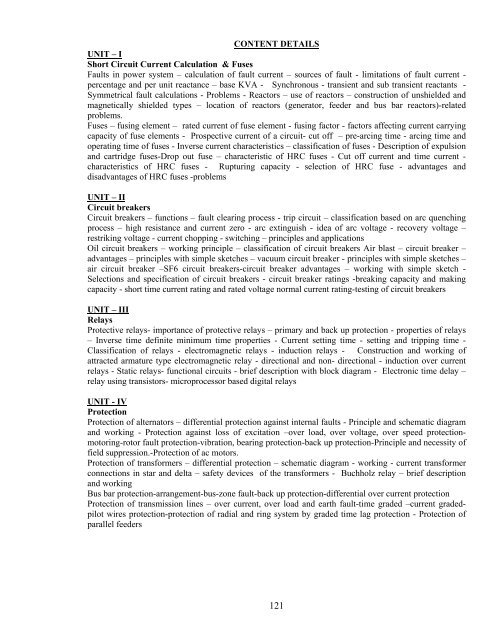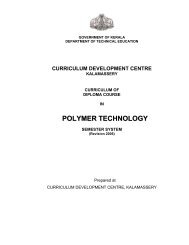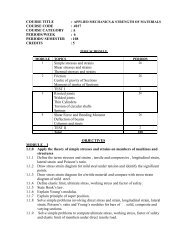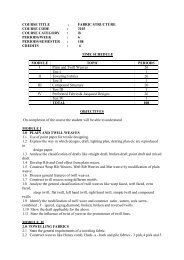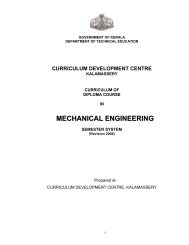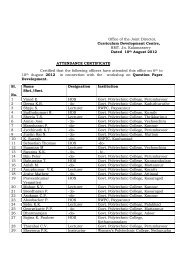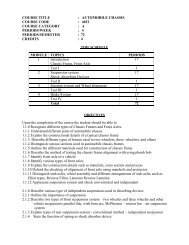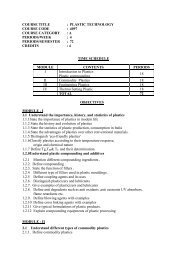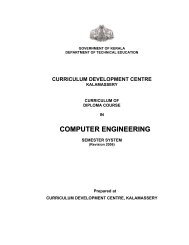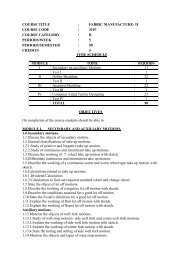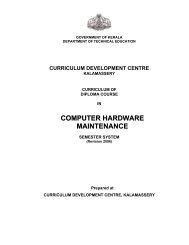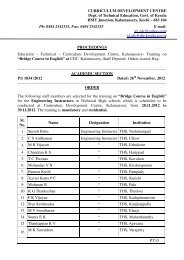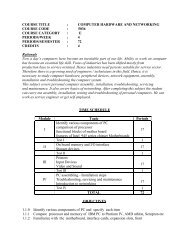13 - Curriculum Development Centre, Kalamassery
13 - Curriculum Development Centre, Kalamassery
13 - Curriculum Development Centre, Kalamassery
- No tags were found...
You also want an ePaper? Increase the reach of your titles
YUMPU automatically turns print PDFs into web optimized ePapers that Google loves.
CONTENT DETAILSUNIT – IShort Circuit Current Calculation & FusesFaults in power system – calculation of fault current – sources of fault - limitations of fault current -percentage and per unit reactance – base KVA - Synchronous - transient and sub transient reactants -Symmetrical fault calculations - Problems - Reactors – use of reactors – construction of unshielded andmagnetically shielded types – location of reactors (generator, feeder and bus bar reactors)-relatedproblems.Fuses – fusing element – rated current of fuse element - fusing factor - factors affecting current carryingcapacity of fuse elements - Prospective current of a circuit- cut off – pre-arcing time - arcing time andoperating time of fuses - Inverse current characteristics – classification of fuses - Description of expulsionand cartridge fuses-Drop out fuse – characteristic of HRC fuses - Cut off current and time current -characteristics of HRC fuses - Rupturing capacity - selection of HRC fuse - advantages anddisadvantages of HRC fuses -problemsUNIT – IICircuit breakersCircuit breakers – functions – fault clearing process - trip circuit – classification based on arc quenchingprocess – high resistance and current zero - arc extinguish - idea of arc voltage - recovery voltage –restriking voltage - current chopping - switching – principles and applicationsOil circuit breakers – working principle – classification of circuit breakers Air blast – circuit breaker –advantages – principles with simple sketches – vacuum circuit breaker - principles with simple sketches –air circuit breaker –SF6 circuit breakers-circuit breaker advantages – working with simple sketch -Selections and specification of circuit breakers - circuit breaker ratings -breaking capacity and makingcapacity - short time current rating and rated voltage normal current rating-testing of circuit breakersUNIT – IIIRelaysProtective relays- importance of protective relays – primary and back up protection - properties of relays– Inverse time definite minimum time properties - Current setting time - setting and tripping time -Classification of relays - electromagnetic relays - induction relays - Construction and working ofattracted armature type electromagnetic relay - directional and non- directional - induction over currentrelays - Static relays- functional circuits - brief description with block diagram - Electronic time delay –relay using transistors- microprocessor based digital relaysUNIT - IVProtectionProtection of alternators – differential protection against internal faults - Principle and schematic diagramand working - Protection against loss of excitation –over load, over voltage, over speed protectionmotoring-rotorfault protection-vibration, bearing protection-back up protection-Principle and necessity offield suppression.-Protection of ac motors.Protection of transformers – differential protection – schematic diagram - working - current transformerconnections in star and delta – safety devices of the transformers - Buchholz relay – brief descriptionand workingBus bar protection-arrangement-bus-zone fault-back up protection-differential over current protectionProtection of transmission lines – over current, over load and earth fault-time graded –current gradedpilotwires protection-protection of radial and ring system by graded time lag protection - Protection ofparallel feeders121


